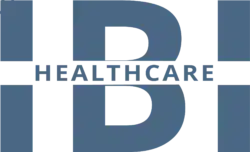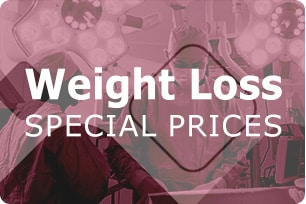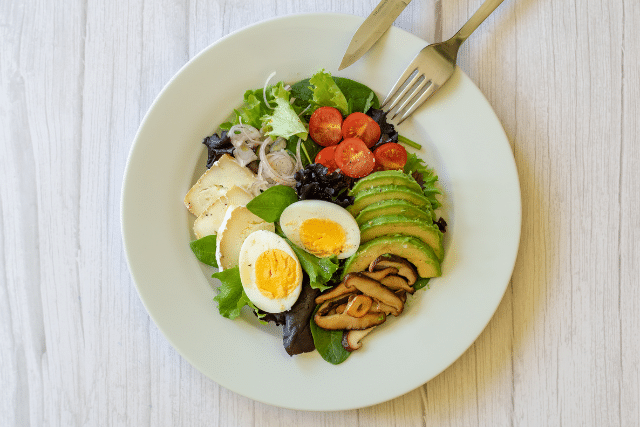In the last few years, low-carb diets have become super popular worldwide as a way to lose weight and improve overall health. These diets are all about reducing carbs and increasing protein and fat, often structured within a low-carb meal plan to help manage tummy fat, body weight, blood sugar, and other metabolic conditions.
According to recent stats by NIH, 15-20% of adults in the US are following some form of low-carb diet. However, globally the trend is following suit as more and more people are turning to low-carb eating habits for various weight loss maintenance and health benefits.
Low Carbohydrates Diet Foods Overview
How Do Low-Carb Diets Work?
Low-carb diets work by reducing carbs, which are the body’s main source of energy. When total carbs used are minimized the body goes into a metabolic state. Nutritionists refer to it as ketosis where it starts burning fat for fuel instead of glucose.
These less simple carbs can lead to weight loss and improved metabolic markers like reduced blood sugar and insulin levels. Research has also shown that low-carb diets can reduce hunger and cravings making it easier to stick to your diet.
What Can I Eat on a Low-Carb Diet?
A low-carb diet allows for many nutrient-dense foods that provide all the vitamins and minerals while keeping carb intake low. Meats, fish, eggs, and healthy fats like olive oil and avocado are the staples of a healthy diet in this low-carb diet. These foods are low in carbs and high in protein and healthy fats so they help you maintain muscle mass and support metabolic health. The concept of ‘net carbs’ is significant in choosing low-carb foods, as it refers to the carbohydrates absorbed by the body after subtracting indigestible fibers and certain sugar alcohols from the total carbohydrate content.
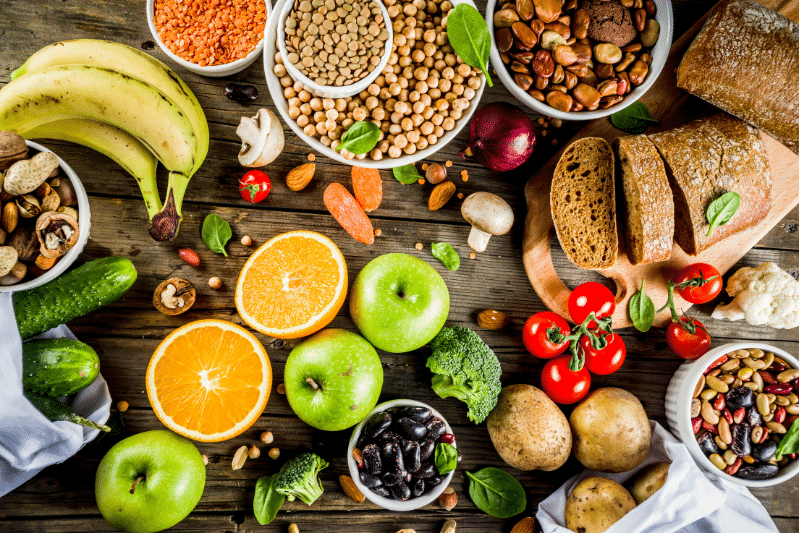
Low Carbohydrates Diet Foods FAQs
What Are Filling but Low in Carbs?
Finding filling foods that are also low in carbs can be tough but there are a few options. Nuts and seeds are great snacks that provide a good balance of healthy fats, protein, and fiber that can keep you full.
Cheese, especially hard cheese is another satisfying option. Non-starchy veggies like spinach, kale, and zucchini are low in carbs but high in volume so they can fill you up without adding many calories.
What are Zero-Carb Foods?
If you want your weight loss diet cut carbs as much as possible, meat, fish, eggs, and natural fats (butter and olive oil) are the way to go. These foods have almost no carbs so are perfect for being in ketosis. Plus they have all the nutrients you need, protein, omega-3s, and fat-soluble vitamins for overall health support and weight loss.
What Snacks Have No Carbs?
When it comes to snacking, pork rinds, hard-boiled eggs, olives, and cheese sticks are great options for those following a low carb no-carb diet. These snacks are delicious and will keep you full between meals without adding to your daily carb count. Nut butter (without added sugar) is also a convenient and satisfying snack.
What are High Protein Low Carb Foods?
High-protein eating low-carb whole foods is great for building or maintaining muscle mass on a low-carb diet. Chicken breast, turkey, lean cuts of beef, and fish are high in protein and low in carbs. Greek yogurt (unsweetened) and tofu are also high in protein and low in carbs so are great options for many meals.
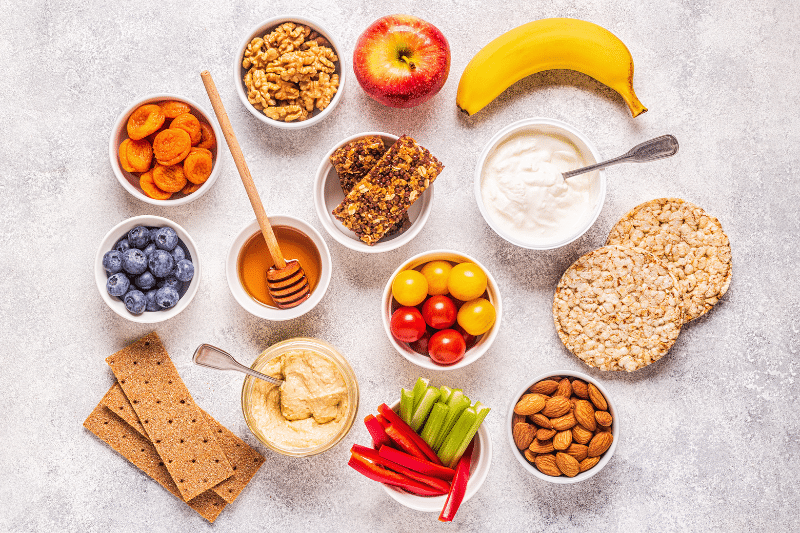
What are the Best Low-Carb Vegetables?
Nonstarchy vegetables are a big part of a low-carb diet because of their low-carb content and high nutrient density. Leafy greens like spinach, kale, and Swiss chard are great options.
Cruciferous vegetables like broccoli, cauliflower, and Brussels sprouts are also good options, high in fiber and nutrients with no significant carb load. Bell peppers, cucumbers, and zucchini are low-carb veggies that can be used in many dishes.
What are Low-Carb Breakfast Options?
Starting the day with a low-carb breakfast sets the tone for the rest of the day. Egg-based dishes like omelets or scrambled eggs with veggies are quick and easy.
Avocado toast on low-carb bread or keto-friendly pancakes made from almond flour are also popular. Greek yogurt with a handful of berries and nuts is a good balance of protein, healthy fats, and minimal carbs.
Are There Low-Carb Fruits?
Most fruits are high in carbs but some are lower than others and many high-carb foods can be had in moderation on a low-carb diet. Berries like strawberries, blueberries, and raspberries are the lowest in carbs and are full of antioxidants and fiber.
Avocados and tomatoes are technically fruits that are naturally low in carbs and can be included in a low-carb diet. Just be sure to have them in controlled portions to stay within your daily carb limit.
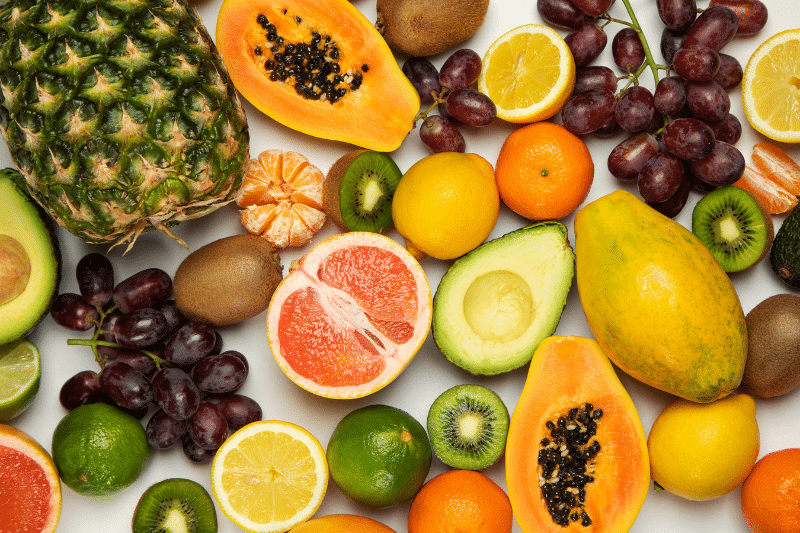
Foods to Avoid on a Low Carbohydrates Diet Foods
5 Foods to Avoid on a Low-Carb Diet?
-
Sugary Foods – Candy, cakes, cookies, and pastries are high in sugar and carbs so not suitable for a low-carb diet.
-
Grains – Bread, pasta, rice, and cereals are high in carbs and should be avoided.
-
Starchy Vegetables – Potatoes, corn, and peas have more carbs than non-starchy vegetables.
-
Sweetened Beverages – Soda, fruit juices, and sweetened teas are loaded with sugar and carbs.
-
Legumes – Beans, lentils, and chickpeas are high in carbs despite being good sources of protein and fiber.
What’s Restricted on a Low-Carb Diet?
In addition to the above many processed foods are restricted to a no carbohydrate content very low fat diets no-carb diet because of their high-carb content and low nutritional value. These include processed snacks, instant meals, and many condiments like ketchup and barbecue sauce. That often has added sugar. Many fruits too especially tropical ones like bananas and mangoes. Doctors recommend restricting to low carbohydrate only because of their high sugar content.
Are all Grains Restricted on a Low Carb Diet?
Most grains are restricted to a low-carb diet because of their high-carb content. This includes wheat, rice, oats, and barley, etc. However, some diets allow small amounts of low-carb grains like quinoa and buckwheat in moderation.
Grain substitutes like cauliflower rice and almond flour are popular options for those who want to have whole grains and a grain-like texture without the carbs.
What Drinks to Avoid on a Low-Carb Diet?
On a low-carb diet, you should avoid drinks high in sugar and carbs. This means sugar-sweetened drinks like soda and fruit juice and alcohol like beer and sugary cocktails. Instead opt for water, unsweetened tea, black coffee, and occasionally low-carb alcohol like dry wine or spirits with soda water.
Can I Eat Dairy on a Low-Carb Diet?
Dairy can be part of a low-carb diet but you need to choose the right types. Full-fat dairy products like cheese, heavy cream, and butter are low in carbs and high in healthy fats.
But be careful with milk and yogurt as they contain lactose a natural sugar. Greek yogurt and cottage cheese are generally lower in carbs than regular yogurt especially if you choose unsweetened.
Are There Low-Carb Sweeteners?
Yes, there are low-carb sweeteners you can use instead of sugar. Stevia, erythritol, and monk fruit sweeteners are popular options that don’t raise blood sugar levels. These sweeteners can be used in baking and cooking so you can enjoy sweet treats without the carbs. But use them in moderation and be aware of any digestive sensitivities they may cause.
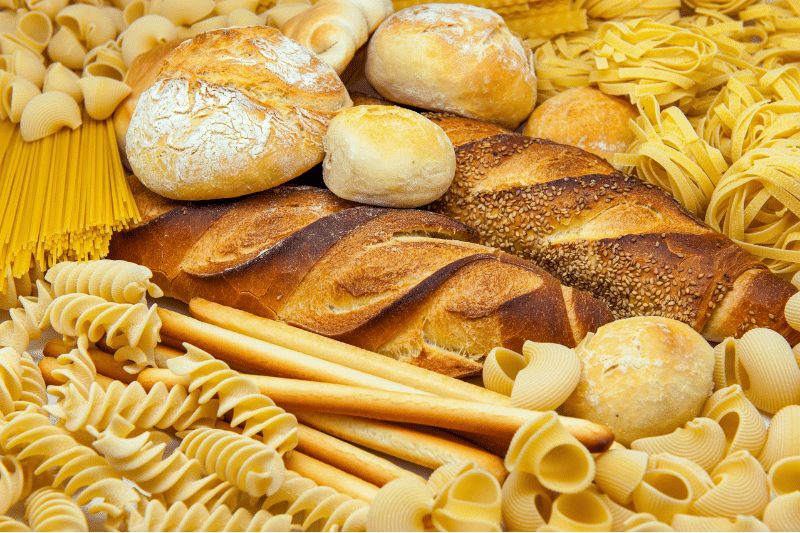
Low Carbohydrates Diet Foods – Effects and Examples
What is a Low-Carb Diet?
One example of a low-carb diet is the Atkins Diet which limits carbs but allows lots of food including meat, cheese, and vegetables. Another low carbohydrate diet foods is the Paleo Diet which a low carb diet focuses more on whole foods and eliminates grains, legumes, and highly processed foods. Both diets aim to reduce carb intake for health benefits.
Can You Lose Weight by Cutting Carbs?
Yes, you can lose weight by cutting carbs. This happens because reducing the amount of carbs also lowers insulin levels, a hormone that stores fat. With fewer carbs and lower insulin levels. The body becomes more efficient at burning stored fat for energy. Plus many people find low-carb diets naturally reduce appetite so you eat fewer calories without feeling deprived.
What Happens When You Cut Carbs for 2 Weeks?
Cutting carbs low carbohydrate diet for 2 weeks can lead to rapid initial body weight loss, mostly water loss. Carbs are stored in the body as glycogen which holds water.
When glycogen stores are depleted the body releases this excess water and you lose weight. Many people also report increased energy and focus as their body adapts to using fat for fuel.
What Happens if I Go Carb-Free for a Month?
Going carb-free for a month can lead to more weight loss and deeper ketosis where the body becomes highly efficient at burning fat. But you need to balance your ketogenic diet with enough nutrients.
Some side effects can be keto flu which can include headaches, fatigue, and irritability as the body adjusts to follow a low carb no-carb lifestyle. Make sure you consume enough electrolytes and stay hydrated to minimize these.
How Does a Low-carb Diet Affect Blood Sugar Levels?
Low-carbohydrate diets and no-carb diets can stabilize blood sugar levels big time, good for diabetics or insulin resistant. By reducing carb intake, the amount of glucose that enters the bloodstream is minimized and blood sugar levels are lower and more stable. This less carbohydrate intake also reduces the body’s demand for insulin which is good for insulin sensitivity.
What are the Side Effects of a Low-Carb Diet?
While low-carb diets are great, they can also have side effects. Short-term side effects following a low-carb diet may be, such as keto flu as mentioned earlier. Long-term side effects can be digestive issues.
Particularly, if you don’t consume enough low-carb veggies. Very low-carb diets can also lead to deficiencies in certain vitamins and minerals if not managed properly.
How Does a Low-Carb Diet Compare to a Keto Diet?
A keto diet is a more extreme version of a low-carb diet. While both limit carb intake, a keto diet limits carbs to about 5-10% of daily intake and increases fat intake. This puts the body in ketosis more consistently than other low-carb diets.
Blow-fat diets can lead to weight loss and better metabolic health but a keto diet requires more planning to balance nutrients.
What are the Long-Term Effects of a Low-Carb Diet?
A long-term low-carb diet can lead to sustained weight loss and better health markers like lower blood sugar and cholesterol. But you need to make sure you’re getting enough nutrients by eating a variety of foods.
Some studies say a long-term low-carb diet can lead to a reduction in fiber and some essential nutrients so make sure to include a wide range of low-carb veggies and nutrient-dense foods.

Low Carbohydrates Diet Foods – Tips and Recipes
What are Some Quick and Easy Low-Carb Recipes?
Zucchini Noodles with Pesto and Grilled Chicken
Spiralized zucchini, homemade pesto, and grilled chicken.
Cauliflower Fried Rice
Low-carb version of a classic, cauliflower rice, mixed veggies, and eggs.
These are low in carbs and big on flavor-complex carbs trans fats and nutrients.
How Do I Meal Prep for a Low-Carb Diet?
Meal prepping for a low-carb diet means planning and preparing your meals in advance so you can stick to your goals. Start by choosing a variety of proteins such as chicken, beef, and tofu and a range of low-carb veggies.
Cook these in bulk and portion them out in containers. For example, cook chicken breasts and chop veggies for salads so you can throw together meals quickly throughout the week.
What are Some Low-Carb Snacks on the Go?
Finding low-carb snacks can be tough but there are plenty of options:
Nuts and Seeds – Almonds, walnuts, and sunflower seeds.
Cheese – String cheese or cheese slices.
Hard-Boiled Eggs – Easy to prepare and full of protein.
Veggie Sticks with Guacamole – Crunchy and tasty.
Beef Jerky – Look for low-sugar varieties to keep carbs low.
These are perfect for busy days when you need a quick bite.
How Do I Satisfy My Sweet Tooth on a Low-Carb Diet?
Craving something sweet on a low-carb diet? Here are some ideas:
Berries with Whipped Cream – Strawberries, blueberries, or raspberries with a dollop of sugar-free whipped cream.
Keto Chocolate Mug Cake – Made with almond flour, cocoa powder, and a sugar substitute.
Avocado Chocolate Mousse – A creamy low-carb dessert made with ripe avocados, cocoa powder, and a low-carb sweetener.
These will help you have your sweet potatoes, low-carb desserts, and treats without breaking your low-carb diet.



